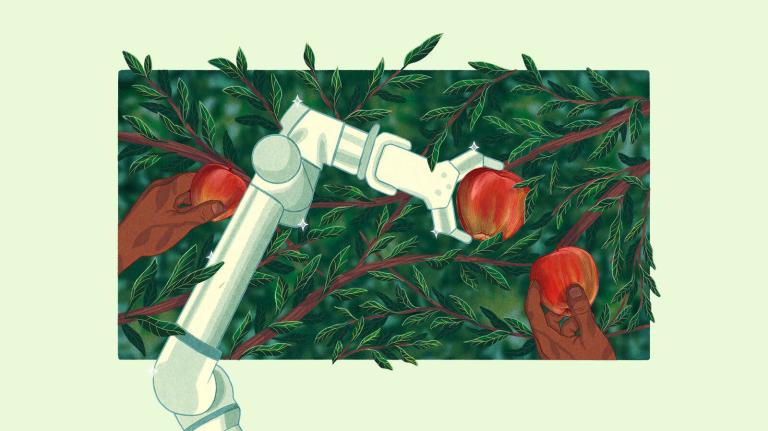Last week, I wrote about how feeding cows waste from the ethanol process, known as distillers grains, seems to increase incidence of the deadly pathogen E. coli 0157:H7. I added that — coincidentally or not — a recent spike in recalls of E. coli 0157:H7-tainted hamburger meat has coincided with a surge in distillers grains use in cow rations.
Over the weekend, I learned that feeding distillers grains to confined cows is hardly a new practice. Reading Nature’s Perfect Food: How Milk Became America’s Drink, by UC-Santa Cruz sociologist and food-studies scholar E. Melanie Dupuis, I came across this passage:
By the mid-nineteenth century, "swill" milk stables attached the the numerous in-city breweries and distilleries provided [New York City] with most of its milk. There, cows ate the brewers grain mush that remained after distillation and fermentation … As many as two thousand cows were located in one stable. According to one contemporary account, the visitor to one of these barns "will nose the dairy a mile off … Inside, he will see numerous low, flat pens, in which more than five hundred milch cows owned by different persons are closely huddled together amid confined air and the stench of their own excrements."
Evidently, in that era before pasteurization or even a germ theory of disease, sanitary troubles raged. This was the dawn of fresh milk as a mass-produced, mass-consumed commodity, and the filthy conditions in these urban feedlots produced what Dupuis calls "an incredibly dangerous food": "a thin, bluish fluid, ridden with bacteria yet often called ‘country milk.’"
Interestingly, urban infant mortality rates — "by the 1840s, an infant born in the city had a 50 percent chance of living to the age of five" — far outstripped those in rural areas, where kids drank milk from cows that fed on grass.
Dupuis correctly notes that distillers grains are "in fact quite nutritious" — high in protein, vitamins, and fat. This insight would suggest that the health problems associated with 19th-century urban "swill" milk resulted from unsanitary conditions combined with lack of pasteurization, not from the choice of feed.
But before letting the recent surge of distillers grain use off the hook, we should remember that that the feedstock for 19th century distillers grains would have been what we would now think of as "heirloom" varieties of corn and other grains, grown in living soil.
Today, of course, we’re feeding our cows distillers grains from genetically modified, hybridized corn grown in soil lashed with artificial fertilizers, herbicides, pesticides, and fungicides. It seems likely enough that today’s product might not be quite as nutritious as yesterday’s.
Then there’s the fact that feeding cows grain and grain products, as opposed to grass, seems to raise the acid level of their stomachs, causing all manner of problems, including strains of E. coli quite dangerous to humans, such as infamous 0157:H7. Might some of the 19th century health problems have stemmed from this factor?
At any rate, Dupuis’ book is so far a great read: a pungently written, lavishly documented critical history of milk’s career as "nature’s perfect food."

